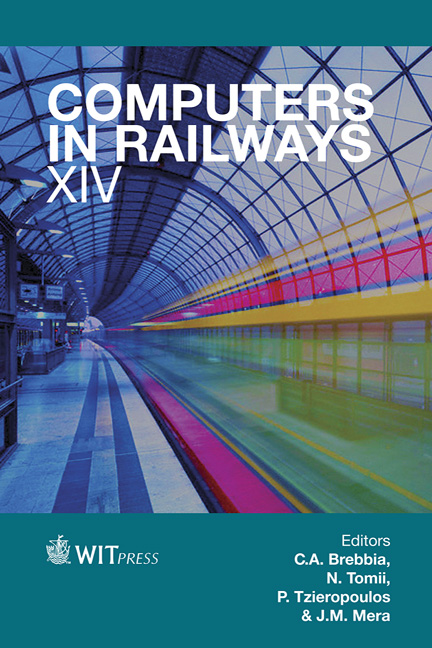A Turn-back Track Constraint Train Scheduling Algorithm On A Multi-interval Rail Transit Line
Price
Free (open access)
Transaction
Volume
135
Pages
12
Page Range
151 - 162
Published
2014
Size
1,099 kb
Paper DOI
10.2495/CR140121
Copyright
WIT Press
Author(s)
Z. B. Jiang & X. Y. Xiao
Abstract
With the rapid increase of passenger volume, the interval of some rail transit lines in China has reached a minimum value, which makes turn-back capacity one of the main capacity-limiting factors instead of section headway, particularly during the peak hours on workdays. A general simulation modeling framework and algorithm in which the divide and conquer rule is adopted for train scheduling problems on a multi-interval rail transit line with turn-back track constraint is proposed in the paper, and the objective is to obtain a feasible timetable based on passenger demand at different time periods, line capacity, number of rolling stocks, location of depots, train routing, turn-back type. Lastly, a new version of the TPM software is programmed by the proposed framework and algorithm, and Shanghai Rail Transit Line 2 is presented to demonstrate. The result shows that the proposed algorithm performs very efficiently, and a feasible timetable with a five-interval period, 535 trains and one turn-back track constraint at GLR station is generated in 15 seconds by TPM. Keywords: rail transit, train scheduling, multi-interval, turn-back track constraint.
Keywords
rail transit, train scheduling, multi-interval, turn-back track constraint.





